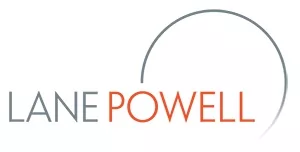The Small Business Administration (SBA) has begun issuing regulations to carry out the changes to the Paycheck Protection Program (PPP) effected by passage of the Economic Aid to Hard-Hit Small Businesses, Nonprofits, and Venues Act (Economic Aid Act) that was included as part of the Consolidated Appropriations Act 2021 (CAA21) (which we discussed in this article) by releasing two interim final rules (IFRs). First, is an IFR that mainly restates three-fourths of the 25 previously published IFRs (which explains the 82-page length of the IFR). Second, is an IFR about second PPP loans. With these IFRs, the SBA has divided PPP loans into two categories: the first PPP loan received by borrowers (First Draw PPP Loans) and a second PPP loan allowed to PPP borrowers that qualify (Second Draw PPP Loans).
Consolidated IFR for First Draw PPP Loans
The current PPP loan rules resulted from 25 IFRs issued by the SBA between April 2 and June 25, 2020. The SBA has now consolidated, with some changes, 19 of these IFRs into a single IFR.1 The changes made by the SBA in restating these rules include:
- New Categories of Forgivable Costs: The Economic Aid Act added four new categories for forgivable costs: "covered operations expenditures," "covered property damage costs," "covered supplier costs" and "covered worker protection expenditures." The SBA has provided guidance for these new terms.
- Reapplication for or Increase in PPP Loan: The Economic Aid Act instructed the SBA to provide rules for businesses to reapply for, or to request an increase in, a First Draw PPP Loan. The SBA has extended this relief to borrowers that returned all or part of a PPP loan, or that did not accept the full amount of the approved loan. The SBA also clarified that lenders can make a second disbursement to these borrowers.2
- Exemption From Affiliation Rules for News Organizations: The Economic Aid Act exempted certain news organizations from the affiliation rules and applied the 500 employee test on a per-location basis (same as hotels and restaurants). The SBA revised the eligibility rules to incorporate this and added new guidance for applying the employee limit on a per-location basis.
- New Eligible Entities: The Economic Aid Act generally made housing cooperatives, destination marketing organizations and 501(c)(6) organizations (e.g., Chambers of Commerce) eligible for PPP loans. These entities are only eligible if they have 300 or fewer employees. The SBA has provided guidance for these newly eligible entities.
- New Ineligible Entities: The Economic Aid Act made the following businesses ineligible for a PPP loan: a business in which the President, the Vice President, the head of an Executive Department or a Member of Congress, or the spouse of such person directly or indirectly holds a controlling interest; a publicly-traded business; a business or organization not in operation on February 15, 2020; and a business that received or will receive a grant under the Shuttered Venue Operator Grant program. This ineligibility applies prospectively, from December 27, 2020, except for businesses or organizations not in operation on February 15, 2020. The SBA has provided guidance for these newly ineligible entities. The SBA also made permanently closed businesses ineligible for PPP loans. It is unclear whether this prohibition applies prospectively or retroactively. This prohibition does not apply to a business that has temporarily closed or temporarily suspended its business but intends to reopen.
- Payroll Used to Determine the Amount of the PPP Loan: Businesses that received PPP loans in 2020 used average monthly payroll for 2019 or the one-year period before the date the loan was made to determine the PPP loan amount. For 2021 First Draw PPP Loans, businesses can use average monthly payroll in 2019, 2020 or, the one-year period before the date the loan is made.
- Revision to Definition of Payroll Costs: The Economic Aid Act amended the definition of payroll costs to more clearly include group life, disability, vision or dental insurance. The SBA updated its guidance to reflect this.
- Farmers and Ranchers: The Economic Aid Act retroactively revised the calculation of the maximum First Draw PPP Loan amount for farmers and ranchers. However, the revisions do not apply to a PPP loan that has been forgiven. The SBA has provided guidance for this situation.
- Counting Non-U.S. Employees Toward Employee Limit: As we discussed in this article, initial guidance issued by the SBA indicated that the 500 employee limit (300 for newly added housing cooperatives, 501(c)(6) organizations and destination marketing organizations) only took into account U.S.-based employees. However, as we discussed in this article, the 13th IFR amended the earlier guidance to include foreign-based employees. However, because the prior guidance resulted in "reasonable borrower confusion" about the matter, the SBA did not apply this rule to borrowers that applied for a PPP loan before May 5, 2020. In restating the inclusion of foreign-based employees, the SBA deleted the May 5 safe harbor. This generally should not cause a substantive change for borrowers that relied on the safe harbor.
Second Draw PPP Loans
For Second Draw PPP Loans, the SBA confirmed that the rules applicable to First Draw PPP Loans generally apply. This overlap of operating rules should help streamline Second Draw PPP Loans and ensure that any business that received a First Draw PPP Loan can receive a Second Draw PPP Loan if the business satisfies (1) the drop in revenue requirement and (2) the not more than 300 employees requirement. Items discussed in the IFR for Second Draw PPP Loans include:
- 25 Percent Drop in Revenue: Pursuant to the Economic Aid Act, a First Draw PPP Loan recipient must experience a drop in gross receipts of at least 25 percent in any quarter in 2020 compared to the same quarter in 2019. In addition to applying a test based on quarterly gross receipts, the SBA allows businesses to satisfy this requirement based on annual 2020 gross receipts compared to 2019 gross receipts. As explained by the SBA, this assists businesses that do not keep track of gross revenue on a quarterly basis. We applaud the SBA for providing this common sense solution since, as the SBA points out, it is mathematically obvious that a borrower would need a drop of at least 25 percent in at least one quarter of 2020 (relative to the comparable quarter of 2019) to satisfy this annual test.
- 300 Employee Limit: Pursuant to the Economic Aid Act, Second Draw Loans are available only to businesses with no more than 300 employees, after application of the affiliation rules. As with First Draw PPP loans, the affiliation rules do not apply, and the 300 employee test applies on a per-location basis for hotels, restaurants and certain news organizations. However, we note, that the alternative size standards that allowed businesses with more than 500 employees to receive First Draw PPP Loans do not apply for Second Draw PPP Loans.
- Amount of the Second Draw PPP Loan and $2 Million Cap: As with First Draw PPP Loans, the amount of a Second Draw PPP Loan generally equals 2.5 times average monthly payroll. Unlike First Draw PPP Loans, hotels and restaurants use a higher, 3.5 multiplier. Second Draw PPP Loans are capped at $2 million (rather than $10 million) per affiliated group. Hotels, restaurants and new organizations, exempted from the affiliation rules and able to base the employee test on a per-location basis, have a total cap of $4 million. To determine average monthly payroll, a business can use 2019 or 2020 payroll. In addition, borrowers - other than the self-employed, sole proprietorships or independent contractors - may use the one-year period prior to when the loan is made. Notably, however, businesses that (1) obtain a Second Draw PPP Loan from the same lender that provided the First Draw PPP Loan, (2) used 2019 payroll for their First Draw PPP Loan, and (3) will use 2019 payroll for their Second Draw PPP Loan, do not need to resubmit payroll information. Accordingly, we expect that most or all Second Draw PPP Loan borrowers will use 2019 payroll.
- Use of First Draw PPP Loan: A Second Draw PPP Loan recipient must have used all of the First Draw PPP Loan before the lender disburses the Second Draw PPP Loan. This use includes any increase to the First Draw PPP Loan. Accordingly, businesses that qualify for both an increase in their First Draw PPP Loan and a Second Draw PPP Loan should consider the timing impacts of obtaining an increase to their First Draw PPP Loan.
Congress generally intended to provide quick relief to businesses that received First Draw PPP Loans that (1) have no more than 300 employees and (2) experienced a drop in gross receipts of at least 25 percent. The Second Draw PPP Loan IFR issued by the SBA generally accomplishes this objective
Footnotes
1 The SBA did not restate the 14th, 15th, 20th, 23rd, 24th or 25th
2 The SBA restated its prior rule allowing partnerships to increase First Draw PPP Loans to include partner compensation.
The content of this article is intended to provide a general guide to the subject matter. Specialist advice should be sought about your specific circumstances.

